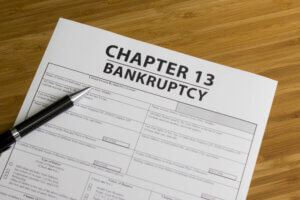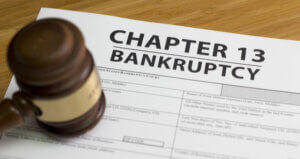 If you’re considering filing a Chapter 13 bankruptcy, you may be wondering how Chapter 13 payments are made. Find out here.
If you’re considering filing a Chapter 13 bankruptcy, you may be wondering how Chapter 13 payments are made. Find out here.
Did you know that 736,440 individuals filed for bankruptcy last year? Often, people make the mistake of viewing bankruptcy as a completely clean slate. While it’s true that bankruptcy can provide you with some debt relief, it’s important to remember that you will likely still need to make payments.
This is especially true if you have a regular income and file for Chapter 13 bankruptcy. Understanding how Chapter 13 payments work is the key to organizing a repayment plan that will get you out of debt as quickly as possible. In this article, we’ll explain how the process works and how to determine how much you owe. Let’s get started!
How Do Chapter 13 Payments Work?
This article will deal primarily with Chapter 13 payments. If you want to learn more about the bankruptcy process itself, make sure to consult our earlier article about how Chapter 13 works.
To make Chapter 13 payments, you must first file a repayment plan to the courts. The courts will then assign a trustee to review the specifics of your repayment plan. One month after you’ve filed, you will attend a meeting of the creditors. During this time, your trustee and creditors will ask you questions about your income, debts, and bankruptcy paperwork.
After this meeting, you will attend a confirmation hearing with a judge. The trustee will be present and will advise the judge as to whether your repayment plan is realistic and possible. From there, the judge will decide whether to accept the plan or reject it. If the plan is approved, you will pay a monthly sum to the trustee for a set period of years.
The trustee will then distribute the money to your creditors as laid out by the repayment plan. The amount is contingent on the nature of your debt to them. Secured debts are paid to creditors in full while unsecured debts are typically only partially paid.
Length of Repayment Plan
The length of your Chapter 13 repayment plan can either last three or five years. The time is determined by your monthly income and the state’s median income. In simple terms, a median income is a figure that divides the state’s population in two. Half of the population makes a figure over the median income, and half earn a living under the state’s set amount.
If your income falls below your state’s median income, your repayment period will last three years. If your income falls above your state’s median income, then your repayment period will last five years.
However, it’s important to note that this time schedule is determined by your monthly income six months before you decided to file for bankruptcy. As such, if you lost your job recently and got another before the decision to file, then you will likely be judged based on your previous job.
How Do You Determine How Much You Owe?
The first step to finding out how much you owe is determining your income and expenses. This includes money from employment (salary and bonuses), as well as sources such as social security, unemployment, pension, and alimony. You then subtract your monthly expenses from this amount based on IRS standards.
The leftover amount is what’s known as your disposable income. For many people, this will become their monthly payment. However, this amount can be complicated by the specific types of debts that you owe. This part of the process is decided in the meeting of the creditors with your trustee.
Certain debts, like a priority, need to be paid in full. This includes expenses such as alimony, child support, and certain types of income taxes. You also have to account for secured debts, including your house and car payments. If you want to keep these assets, then you will also need to pay them in full.
What’s left is referred to as unsecured debts. This includes expenses like credit card debt, medical bills, and loans. At a minimum, the creditors of this unsecured debt must be paid the amount they would receive in a Chapter 7 bankruptcy case. The amount depends on the value of your nonexempt assets.
Can You File For Chapter 13 Bankruptcy Without a Lawyer?
Yes, you’re allowed to file for chapter 13 bankruptcy without the help of a lawyer. However, we recommend against doing that, as even the basics of Chapter 13 bankruptcy are highly complicated. On top of that, in the last few years, the process has gotten even more complex than Chapter 7 bankruptcy.
When you file on your own, you are responsible for everything — researching the law, knowing court rules, preparing the documents, and making the final decisions. These cases are difficult to get right even when you do have good legal representation.
This means that an overwhelming number of self-represented cases are not confirmed. When the court dismisses your case, you will need to wait and pay additional filing fees in the future. What’s worse, it can seriously affect your ability to file again in the future. As such, you should almost always go with professional legal representation when filing for Chapter 13 bankruptcy.
Need Bankruptcy Legal Representation? Contact Husker Law
As you can see, filing for Chapter 13 bankruptcy is not something you want to do alone. A legal representative is crucial in making a repayment plan, filing, and communicating with your trustee.
So how do you find a legal team you can trust? If you live near Omaha, Nebraska, look no further than Husker Law. We’re expert negotiators who will earn you the best possible outcome from your Chapter 13 bankruptcy. Call (402) 415-2525 today for a consultation so we can help you get your life back on track.

 If you’re considering filing a Chapter 13 bankruptcy, you may be wondering how Chapter 13 payments are made. Find out here.
If you’re considering filing a Chapter 13 bankruptcy, you may be wondering how Chapter 13 payments are made. Find out here.



